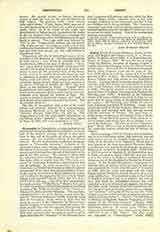

Cressy, HUGH PAULINUS SERENUS, Doctor of Theology and English Benedictine monk, b. at Thorpe-Salvin, Yorkshire, about 1605; d. at East Grinstead, Sussex, August 10, 1674. He was the son of Hugh Cressy by Margery, daughter of Thomas d’Oylie, a London physician belonging to the old Oxford family of that name. Educated first at Wakefield Grammar School, when fourteen years old he went to Oxford (1619) where he took the degree of B.A. in 1623 and that of M.A. in 1627. He was elected a Fellow of Merton College and took orders in the Established Church. Leaving Oxford he became chaplain, first to Thomas, Lord Wentworth, and afterwards to Lucius Cary, Lord Falkland, with whom he went to Ireland in 1638. During his sojourn in Ireland he was appointed Dean of Leighlin, but returned to England the following year (1639). A canonry in the collegiate church of Windsor, which he received in 1642, he was never able to enjoy, owing to the disturbed state of the country; the following year (1643) his patron, Lord Falkland, was killed at Newbury. Cressy then attached himself to Charles Berkeley, afterwards Lord Falmouth, and travelled with him through several Catholic countries of Europe; this experience resulted in his conversion to the Catholic Faith at Rome in 1646. From Rome he went to Paris where he received further instruction from Henry Holden, a doctor of the Sorbonne. He then wrote his “Exomologesis” (Paris, 1647), a work in which he published to the world the motives which led him to change his religion.
After becoming a Catholic Cressy’s first inclination was to be a Carthusian monk; this intention was set aside and he joined the English Congregation of the Order of St. Benedict at St. Gregory’s, Douai, but so poor was he at the time that Queen Henrietta Maria provided him with money for his journey; he was professed at St. Gregory’s, August 22, 1649. From 1651 to 1652 he acted as chaplain to the Benedictine nuns in Paris, returned to Douai (1653-60), and was then sent to the mission in England, residing at Somerset House as one of the chaplains to Charles the Second’s queen. In the English Benedictine Congregation he held the office of definitor of the province in 1666 and was appointed the titular cathedral prior of Rochester in 1669. His last years were spent with the Caryll family at East Grinstead, Sussex, where he died in his sixty-eighth year. The moderate party in the Church of England respected him as a prudent and learned man, and when Dr. Stillingfleet charged him with credulity and want of historical judgment, his defense was taken up by Anthony Wood who commended him for “his grave and good style, proper for an ecclesiastical historian” and spoke of him as one who “doth mostly quote his author and leaves what he says to the judgment of his readers”. Cressy’s “Church History of Brittany or England, from the Beginning of Christianity to the Norman Conquest” (Rouen, 1668) brings the narrative down to about the middle of the fourteenth century. A second part, “From the Conquest Downwards”, was discovered at Douai in 1856, but is yet in MS. (Gillow). His other works are: Appendix to “Exomologesis” (Paris. 1647); Arbor virtutum, a MS. preserved at Ugbrooke, Devon-shire”; “The Scale (or Ladder) of Perfection” by Walter Hilton, ed. Cressy (London, 1659); “Sancta Sophia” by Ven. Fr. August Baker, ed. Cressy (Douai, 1657); “Certain Patterns of Devout Exercises” (Douai, 1657); “Roman Catholic Doctrines no Novel-ties” (1633); “A Non Est Inventiis” (London, 1662); “A Letter to an English Gentleman concerning Bishop Morley” (London, 1662); “Sixteen Revelations of Divine Love“, from an ancient copy (1670); “Fanaticism Fanatically Imputed to the Catholic Church by Dr. Stillingfleet” (1672); “First Question: Why Are You a Catholic?” etc. (London, 1672); “An Answer to Part of Dr. Stillingfleet’s Book intitul’d Idolatry practiced in the Church of Rome” (1674); “An Epistle Apologetical of S. C. to a Person of Honor” (1674); “An Abridgment of the Book called `The Cloud of Unknowing’ by Maurice Chauncey” (MS.).
G. E. HIND

